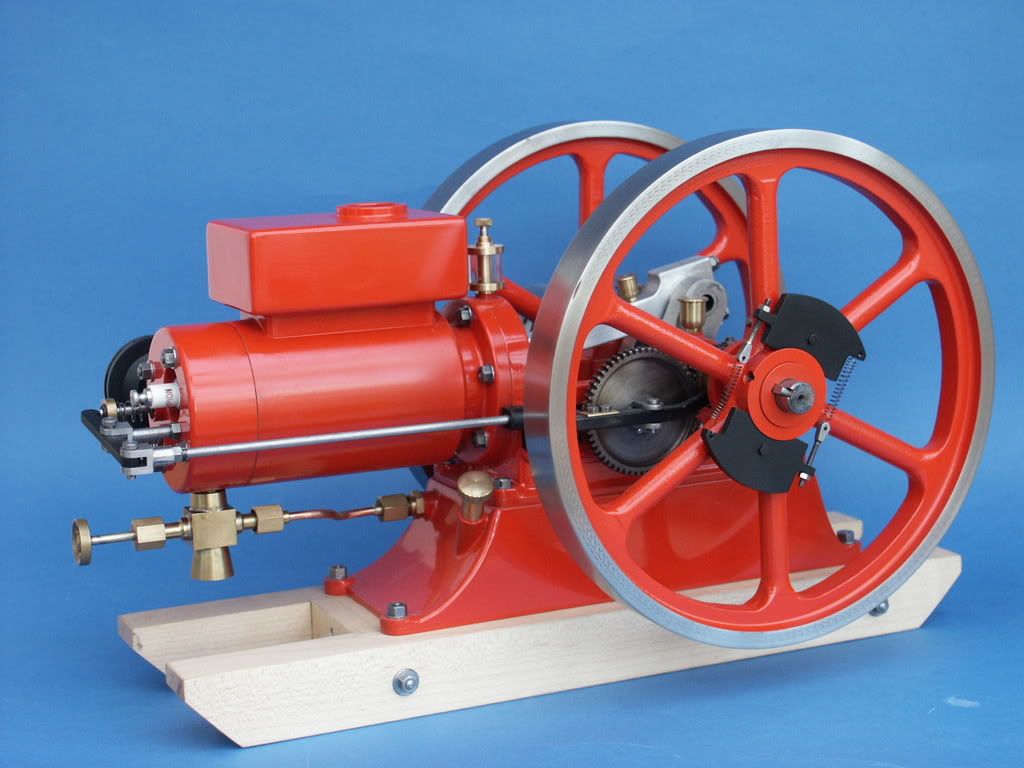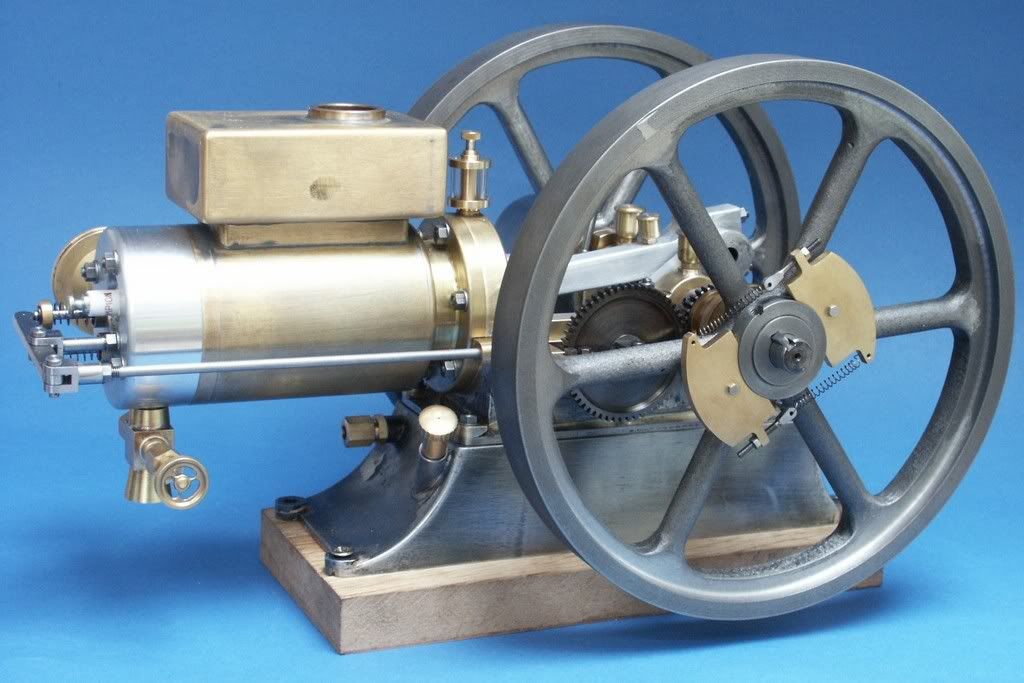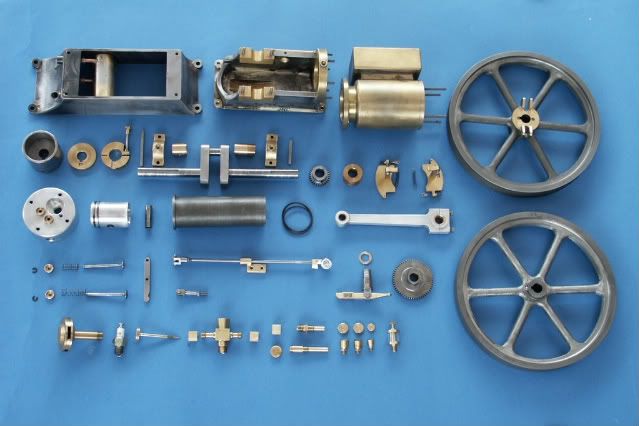I'm looking for my next engine project, and I'm interested in a hit and miss.
I like the water cooled PM Research Red Wing model, but I'm looking for something made from bar stock rather than castings.
I have the drawings for David Kerzel's Horizontal Hit&Miss engine but it's a smaller bore and stroke than my Webster and I'd like it to be more like the size of the PM Research model.
My thought was scaling up the Kerzel engine. I don't know how much, but I'll say double the bore. The Kerzel bore is 0.75" and the PM Research is 1.25" so that's an weirder ratio - 5/3 size, instead of twice.. From the reading I've done here, I'm guessing the starting point is to double the size of every component and then look at specific components, like the piston connecting rod might be bigger and heavier than needed.
Am I on the right track or do I need to start over? I can also keep looking for plans for an engine a bit bigger than the Kerzel.
Bob
I like the water cooled PM Research Red Wing model, but I'm looking for something made from bar stock rather than castings.
I have the drawings for David Kerzel's Horizontal Hit&Miss engine but it's a smaller bore and stroke than my Webster and I'd like it to be more like the size of the PM Research model.
My thought was scaling up the Kerzel engine. I don't know how much, but I'll say double the bore. The Kerzel bore is 0.75" and the PM Research is 1.25" so that's an weirder ratio - 5/3 size, instead of twice.. From the reading I've done here, I'm guessing the starting point is to double the size of every component and then look at specific components, like the piston connecting rod might be bigger and heavier than needed.
Am I on the right track or do I need to start over? I can also keep looking for plans for an engine a bit bigger than the Kerzel.
Bob







































































